The Intel E810-XXVDA4 is a very interesting NIC solution. As a quad port SFP28 NIC, the Intel card offers four 25GbE ports on a single PCIe card. What is a bit different is the form factor of the card. We had one in the lab, so we figured we would do a mini-review of the platform.
Intel E810-XXVDA4 Quad Port 25GbE NIC
The Intel E810-XXVDA4 has a front design that looks similar to the full-height quad SFP+ Intel X710 cards. That full-height PCB and full-height bracket mean that this is not a low-profile card.
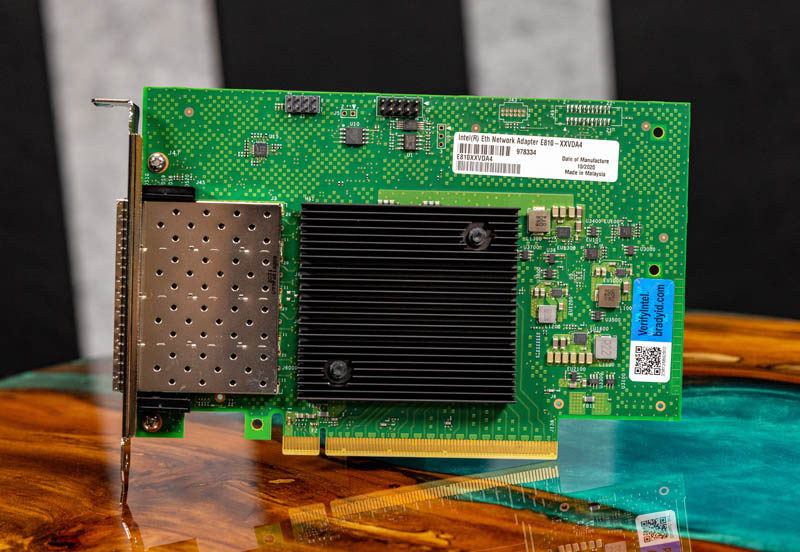
Breaking down the naming convention:
- Intel E810 is the newest generation of Intel Ethernet adapters
- XXV means this is a 25GbE NIC
- DA4 means that this is a DACs, Optics, and AOCs-capable 4-port NIC
That naming convention is a bit more exciting than the rear of the card, which does not have any large components.
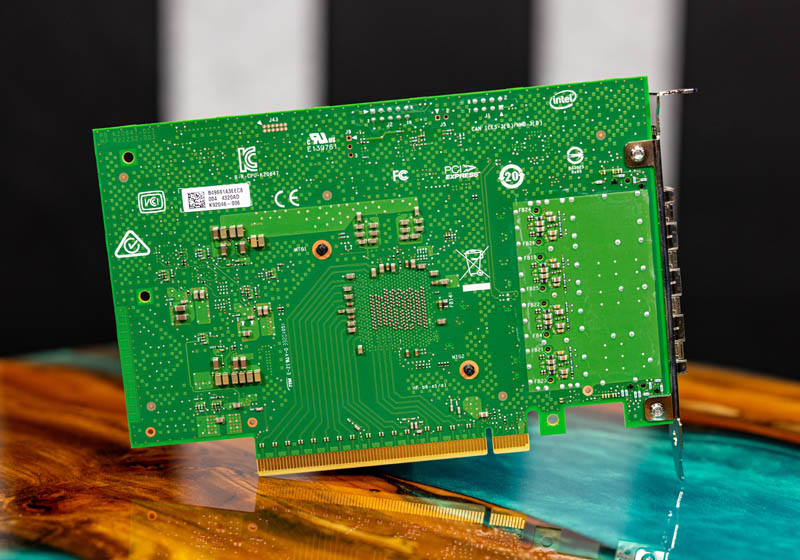
One of the biggest reasons that cards like these are full-height versus low-profile is that physically fitting four SFP28 cages is challenging in a low-profile design.
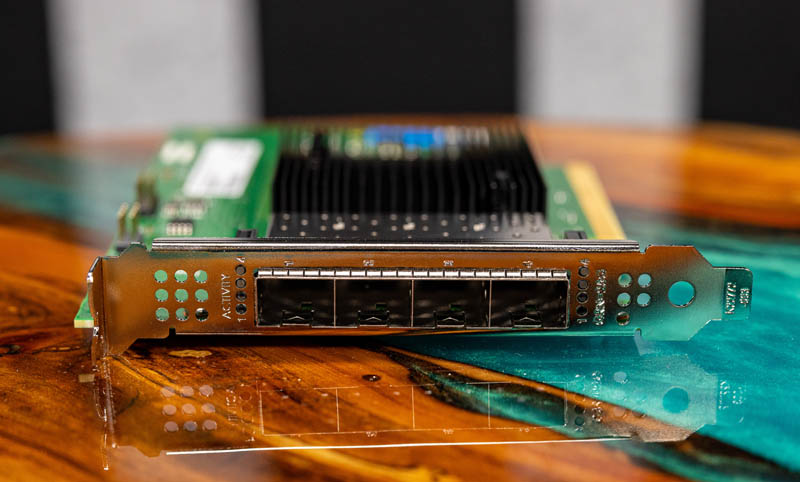
The card itself is also a PCIe Gen4 x16 card.
Intel E810-XXVDA4 Software
In linux, the Intel ice drivers will load in most modern distributions by default. Likewise, these are supported by VMware ESXi 8. In Windows, you may have to download a driver. If it is still not recognized, check out our How to Install an Intel E810 100GbE Network Adapter in Windows 11. That same procedure will work here.
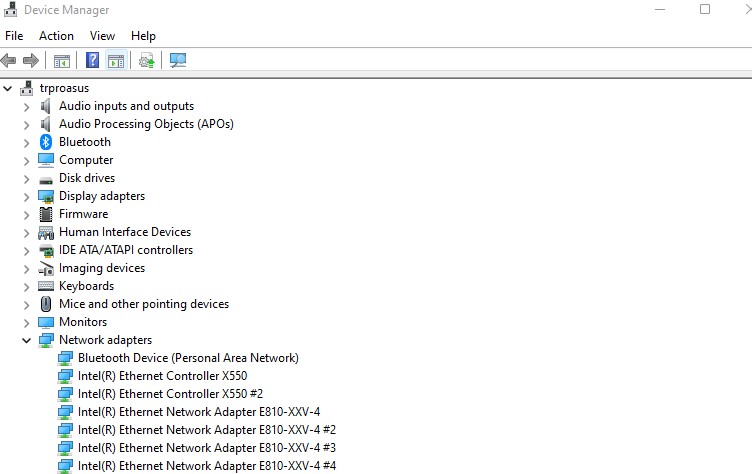
These are generally very well-supported NICs. While Intel offered some 700 generation 25GbE NICs, the 800 generation supports iWARP and RoCEv2 for RDMA, giving a bit more flexibility.
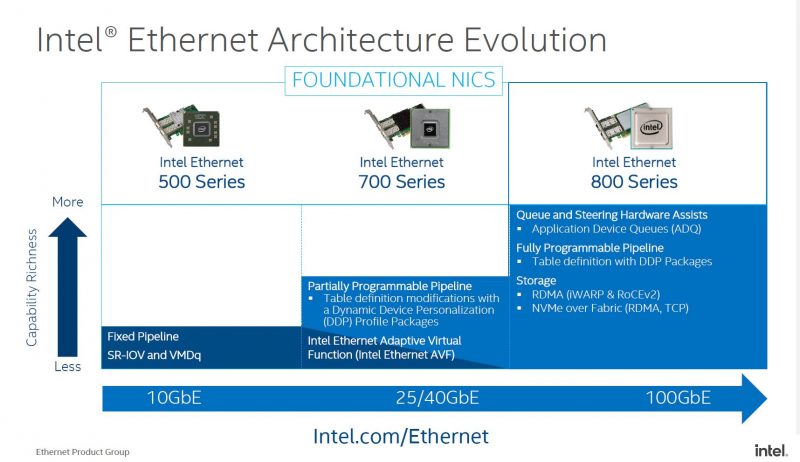
Intel also offers a number of DDP packages for specialized workloads but that requires changing the card’s configuration.
Intel E810-XXVDA4 Performance and Power Consumption
We have heard some folks having challenges getting 25GbE speeds from their cards. So we wanted to check the performance.
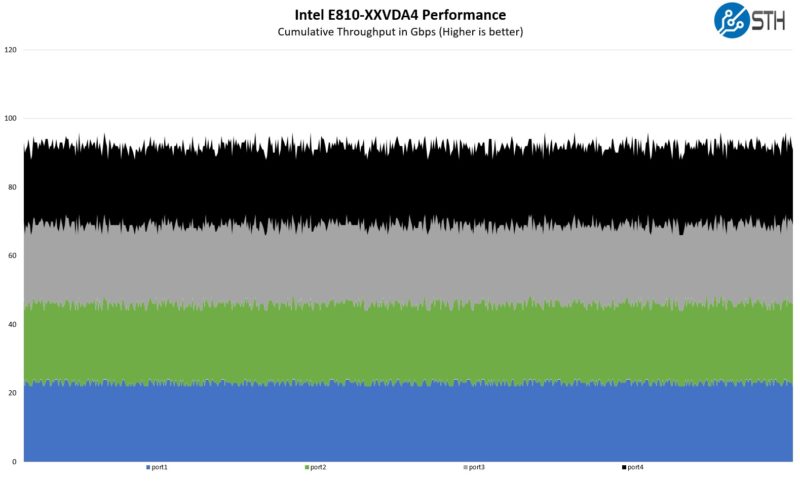
This is a quad 25GbE-capable card, and we got fairly close to 100GbE speeds across all four ports without much tuning.
On the power consumption side, using four DACs we saw power at idle of around 13W and just around 15.5W pushing more traffic. Using optics will increase power consumption so here is Intel’s power table:
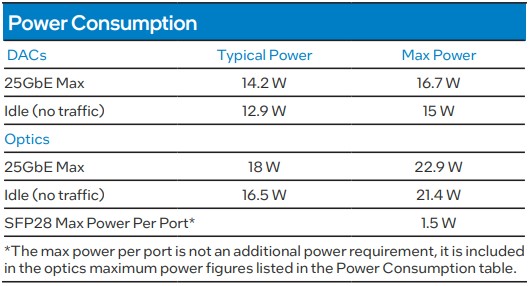
Overall, this is fairly reasonable. At the same time, modern NICs now use more power than when we had quad 1GbE Intel Atom C2558 mITX systems, for example. Pushing data uses significant power.
Final Words
Overall, the Intel E810-XXVDA4 is a platform we have used for over a year. It generally works very well, and it uses Intel’s newer IP, so getting features like RoCEv2 are big upgrades. For those wondering, there are other versions of this card. For example, the Intel E810-XXVDA4T adds time sync features. There is also a low-profile version of this card that one can order using the part “E810XXVDA4LG1P5”. These cards are also sold by a number of server vendors, e.g., this is the HPE P08458-B21 adapter.

It is highly likely you will see more of these cards in the future, so we wanted to just quickly share the cards. For those that are using quad port 10GbE SFP+ adapters, moving to the SFP28 25GbE generation is fairly easy at this point (they are also backward compatible.)

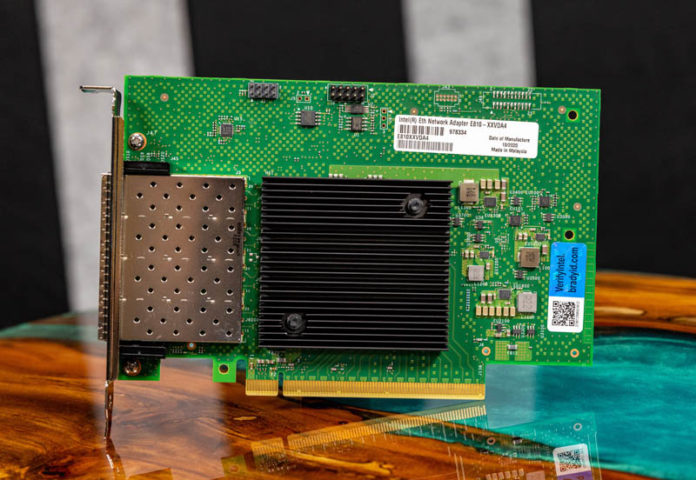



Quick question, was looking the the X710T4L but being out of stock i’m not looking at this baby here. I have some equipement that are 10gbps on rj45. will the E810-XXVDA4 fonction well with an sfp+ to rj45 transreceiver ?
Thanks
Wow I never realized until you spelled it out that XXV -> 25 and therefore I guess C- > 100. I thought it was just gibberish model naming.
That’s incredible power consumption in idle, and tons of complexity added (compatibility of modules, capability of RJ45 converters). I just give up on this and go back to NBASE.
Hi, thanks for the review.
Wondering whether this card reaches the performance under Windows (10 or 11).
Reason: last recently I purchased the Intel X710-DA2 which has 2xSFP+.
Under a random Linux runtime bootet from USB stick I got the expected max throughput of 10 Gbps. In contrast to Linux using Windows 10 and 11 was very disappointing, reached only 58% of max through possible (5.8 Gbps).
Therefore I have some doubts, that such a card would perform under Windows.
It would be wonderful if you could release an article on STH, how we can tune the Windows 10 and 11 TCP/IP Stack, to reach the phantastic network throughput that you get out of the Box when using Linux.
I found information and a big powershell script which changes a lot of parameters but the result is the same, performance even got worse by the big PS script.
Thanks.
AK: yes it can max out easily. To do so, update the firmware. Set the MTU. Done.
I slapped this device rather than 550, 710 or Aquantia to NAS and PC because:
1) it doesn’t make sense to stay on 10gbit with the same consumption
2) it’s more modern and efficient than 540 and such problematic models
3) it works with everything..windows, linux, syno in VM.. just plug DAC cable to your 10gbit switch or 1:1 and that’s it
4) it’s more future proof
5) compatible with SFP+ obviously
Just checked X810 in Windows and it gives 24.9Gbit.